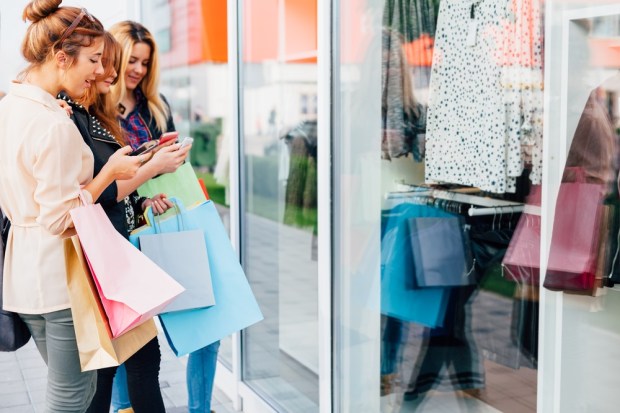Examining The Generational Differences Between Retail Consumers

Retailers trying to bridge the growing gap between the shopping trends of Baby Boomers, Generation Z and every demographic in between may think they have the different generations figured out, but in some cases, operating on assumptions can lead to missed sales. While some well-worn stereotypes of these groups may have truth to them, others are completely off-base, and retailers can’t tailor experiences to shoppers if they don’t know what those shoppers want.
That’s why it’s important for retailers to acknowledge the generational differences and gain consumer insight into the varying demographics, so they can get a glimpse at their habits, interests, likes and dislikes.
Baby Boomers
These consumers were born between 1946 and 1964, and the U.S. was home to 81.3 million of them as of last year, CNN reported. A study that Colloquy issued earlier this year entitled “Shopping by Generation” revealed that baby boomers are the generation most likely to boycott a retailer if they have a negative shopping experience, according to Chain Store Age.
Baby boomers want a simple, streamlined shopping experience, because they are the demographic least likely to enjoy the shopping experience, the report said. Some 84 percent of shoppers in this category desire an in-store experience, and Colloquy found boomers to be the sole generation that doesn’t place a high premium on purchasing the brands from their youthful days.
Although members of this group enjoy shopping in brick-and-mortar stores, they do gravitate to online retailers as well, but tend to lean toward sites of retailers they already know, according to data from NPD Group and reported by Knowledge@Wharton. For example, baby boomers are likely to visit the websites of QVC or Macy’s, since they are familiar with those sellers.
Millennials
Consumers born between 1981 and 1997 fall into this group, which includes up to 92.7 million people in the U.S., making it a bigger demographic than baby boomers, according to CNN. Almost 41 percent of millennials shop online at least once a week, and 62.2 percent shop in stores at least weekly, according to insights from Oracle’s study, “Retail Today Defined by The Power and The Money.”
In addition, millennial consumers lean toward shopping in specialty stores rather than department stores, according to Knowledge@Wharton. Shoppers in the millennial demographic seek personalized experiences and streamlined payment options, such as self-checkout kiosks and digital payment technologies, Forbes reported.
Because millennial consumers have had access to the internet their entire lives, they consider it second nature to make payments using a variety of devices and frequently use their phones as digital wallets. Retailers such as Starbucks have responded by developing millennial-friendly apps that allow ordering, payments, discounts and rewards to these consumers, according to news from Forbes.
Generation Z
The generation born after millennials, often referred to as Generation Z, was born after 1997 and, as of last year, included up to 77.9 million Americans. This demographic carries $44 billion in buying power, said Matthew Shay, CEO of the National Retail Federation (NRF) in an article for Forbes, noting that members of Gen Z seek interactive shopping experiences.
“Almost half of Gen Z members surveyed said the most important thing to them when shopping is the ability to find things quickly, and more than 60 percent say they will not use apps or websites that are hard to navigate or slow to load,” Shay wrote, referring to a study that the NRF conducted of this generation in conjunction with IBM.
Contrary to what many Americans would assume, however, members of Gen Z don’t avoid brick-and-mortar stores. In fact, 67 percent of the people in this generation shop in physical stores the majority of the time, and 31 percent shop in stores “sometimes,” according to the NRF/IBM study, which polled over 15,000 consumers between the ages of 13 and 21.
Retailers that want to capture all of these shoppers should take into account their target audiences, gain consumer insights into their audience’s shopping trends and then evaluate where they can improve or update services to cater to those shoppers.